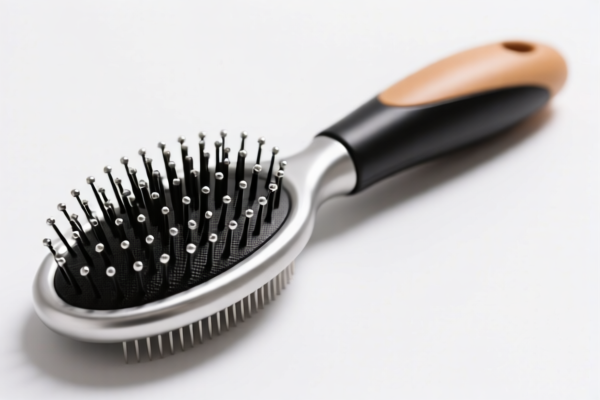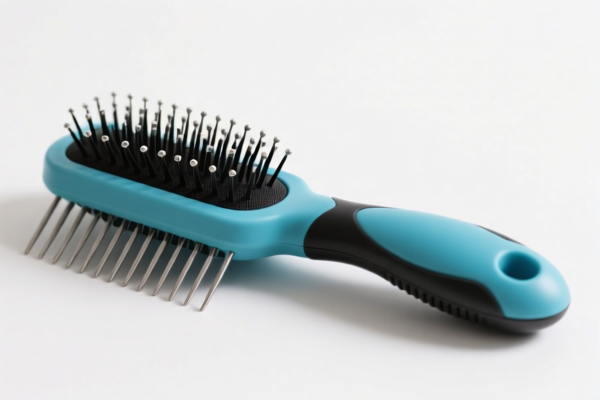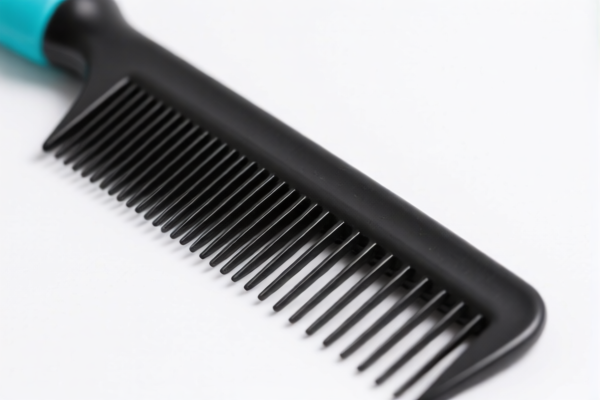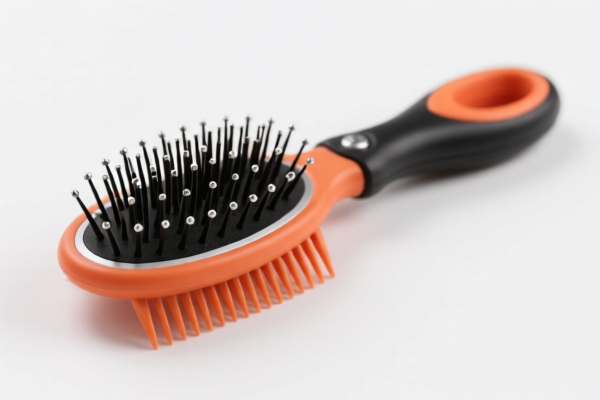| HS Code | Official Doc | Tariff Rate | Origin | Destination | Effective Date |
|---|---|---|---|---|---|
| 9615904000 | Doc | 35.3% | CN | US | 2025-05-12 |
| 9615906000 | Doc | 41.0% | CN | US | 2025-05-12 |
| 8308909000 | Doc | 57.7% | CN | US | 2025-05-12 |
| 7317006560 | Doc | 80.0% | CN | US | 2025-05-12 |
| 8305906000 | Doc | 43.2% | CN | US | 2025-05-12 |
| 3926903000 | Doc | 59.2% | CN | US | 2025-05-12 |
| 3926909910 | Doc | 42.8% | CN | US | 2025-05-12 |
| 3924905650 | Doc | 40.9% | CN | US | 2025-05-12 |
| 3924104000 | Doc | 33.4% | CN | US | 2025-05-12 |




Pet Grooming Comb
A pet grooming comb is a tool designed to remove loose hair, debris, and tangles from an animal's coat. These combs contribute to maintaining coat health, preventing matting, and distributing natural oils.
Material:
- Stainless Steel: The most common material, known for its durability, resistance to rust, and ease of cleaning. Different gauges of steel are used for varying coat types.
- Plastic: Often used for combs with wider teeth or for specific purposes like flea combing. Less durable than steel but generally more affordable.
- Wood: Traditional material, often used for finishing combs or those designed for sensitive skin. Requires careful cleaning and maintenance.
Purpose:
- Detangling: Removing knots and mats from the coat.
- De-shedding: Removing loose undercoat to reduce shedding.
- Coat Health: Stimulating blood circulation and distributing natural oils for a healthy, shiny coat.
- Flea & Tick Removal: Specialized combs with closely spaced teeth to catch and remove parasites.
Function:
Combs work by physically separating the hair strands and removing loose material. The tooth length, width, and spacing determine the comb’s effectiveness for different coat types and issues. Regular combing also allows for early detection of skin issues, parasites, or injuries.
Usage Scenarios:
- Daily/Weekly Grooming: Maintaining coat health and preventing matting.
- Pre-Bath Grooming: Removing tangles before bathing to prevent further knotting.
- Post-Bath Grooming: Detangling and smoothing the coat after washing.
- Flea/Tick Checks: Regularly inspecting the coat for parasites.
- Show Grooming: Preparing animals for competitions, requiring specific coat finishes.
Common Types:
- Slicker Brush/Comb: Features fine, short, angled wire bristles for removing mats and loose hair. Effective on medium to long coats, but can be harsh if used aggressively.
- Metal Comb (Greyhound Comb): Features long, widely spaced teeth, ideal for removing tangles and debris from long, thick coats.
- Flea Comb: Has very closely spaced teeth to trap fleas and their eggs. Often used with a dark-colored bowl to easily spot parasites.
- Undercoat Rake: Designed to remove loose undercoat without damaging the topcoat. Effective on double-coated breeds.
- Deshedding Comb: Features specialized blades to efficiently remove loose fur.
- Mat Splitter/Rake: Used to carefully break up mats before combing them out.
- Wide-Tooth Comb: For detangling long, thick hair and finishing coats.
- Curry Comb: (Primarily for horses, but sometimes used on dogs with short, thick coats) Features rubber or plastic teeth to loosen dirt and debris.
Pet grooming combs fall under several potential classifications based on material and specific features. Here's a breakdown of relevant HS codes:
- 9615904000: Combs, hair-slides and the like; hairpins, curling pins, curling grips, hair-curlers and the like, other than those of heading 8516, and parts thereof: Other: Other: Of rubber or plastics, not set with imitation pearls or imitation gemstones. This code applies to combs made of rubber or plastics without any embellishments like imitation pearls or gemstones. The first two digits (96) indicate "Miscellaneous manufactured articles". The next four (1590) specify "Combs and similar articles". The final digits (4000) further define the material as rubber or plastics. The total tax rate is 35.3%.
- 9615906000: Combs, hair-slides and the like; hairpins, curling pins, curling grips, hair-curlers and the like, other than those of heading 8516, and parts thereof: Other: Other: Other. This is a broader classification for combs not specifically defined elsewhere, with a total tax rate of 41.0%.
- 3926903000: Other articles of plastics and articles of other materials of headings 3901 to 3914: Other: Parts for yachts or pleasure boats of heading 8903; parts of canoes, racing shells, pneumatic craft and pleasure boats which are not of a type designed to be principally used with motors or sails. If the comb is made of plastic and is a part for a yacht or pleasure boat, this HS code may apply, with a total tax rate of 59.2%.
- 3926909910: Other articles of plastics and articles of other materials of headings 3901 to 3914: Other: Other Laboratory ware. If the comb is made of plastic and is used as laboratory ware, this HS code may apply, with a total tax rate of 42.8%.
Regarding HS code 9615904000 and 9615906000, it is important to determine the exact material composition of the comb. If the comb is made of rubber or plastic without any imitation pearls or gemstones, 9615904000 is the more specific and appropriate code. If the material is not clearly rubber or plastic, or if it contains other embellishments, 9615906000 would be used.
Customer Reviews
No reviews yet.